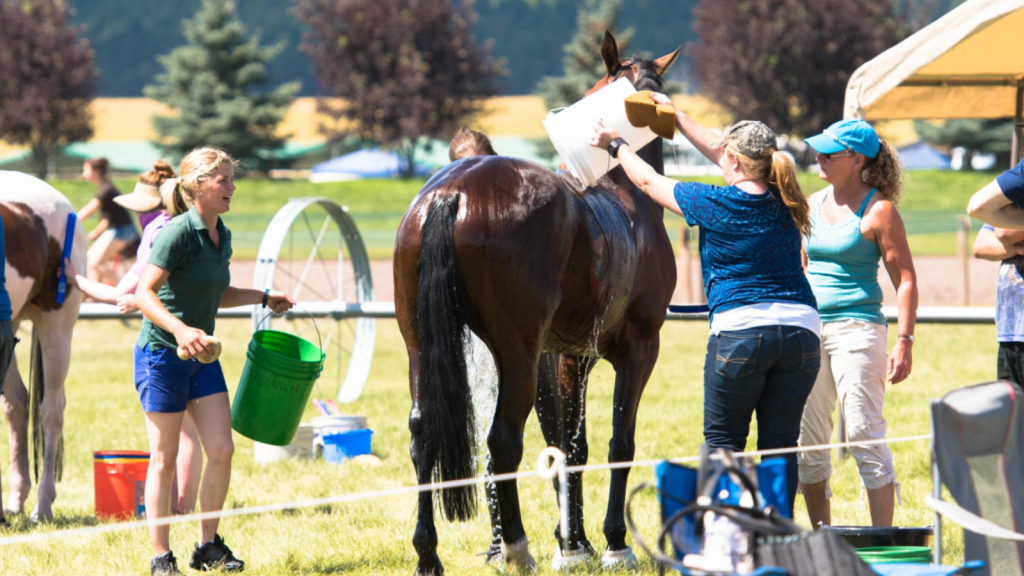WHAT IS HEAT STRESS IN HORSESHeat stress in horses occurs when their body is unable to properly regulate its internal temperature due to excessive heat and humidity. Heat is produced by the metabolic functions such as digestion and exercise. The major mechanism of cooling in the horse is the loss of heat during sweating. Evaporation of sweat results in heat loss. Heat stress can progress to heat stroke, a progression of body temperatures to levels which can emanate into a major emergency. Horses are particularly susceptible because they don’t sweat as efficiently as humans.
SIGNS /SYMPTOMS OF HEAT STRESS IN HORSES1. Increased respiratory rate (rapid breathing)2. Excessive sweating3. Deceased sweating if in combination with dehydration4. Rapid heart rate that does not return to normal after the cessation of exercise, or a rapid heart rate a rest5. Increase in body temperature above 102 degree F6. Muscle weakness7. Dehydration, Signs of which may include sunken eyes, lack of urination, dry tacky mucous membranes, loss of skin elasticityHEAT STROKE IN HORSES is an exacerbation of the signs of heat stress to a life threatening situation. Immediate medical intervention is necessary. Signs may include:1. Persistent elevation of body temperature as the individuals homeostatic mechanisms are overwhelmed ( cooling vs heating). Body temperature in the range of 105 degrees.2. Markedly elevated respiratory rate. Or as the condition progresses a deep- slower respiration with an an abdominal component3. Progressive muscle weakness, stumbling, collapse, convulsionCAUSES OF HEAT STRESS/STROKE1. The two major causes of are exercise in high temperature with high humidity ( high heat index) and transportation/shipping in vehicles with poor ventilation and /or infrequent access to water2. Inadequate access to water and shade3. Poor barn ventilation4. Obesity may exacerbate any of the above.TREATMENT1. Move to Shade: Immediately get the horse out of the sun and into a shaded, cooler area2. Remove Tack: Remove any tack and equipment to allow better heat dissipation3. Wet the horse’s body with cool water. Starting with the areas producing the most sweat and continuously apply cool water4. Offer water5. Use fans or create a breeze to aid evaporation6. Veterinary Attention: If the horse’s condition doesn’t improve quickly or if it collapses, contact a veterinarian immediately. Supportive care such as intravenous fluids can be life savingPreventing heat stress is crucial. Ensure proper hydration, provide shade, and avoid strenuous activities during the hottest parts of the day. Don’t ask your horse to do more than you would on a hot day and be mindful of your horses current fitness level. Don’t just check the ambient temperature, the humidity has a major influence on the bodies ability to evaporate the sweat that is needed for cooling. The combination of the temperature and the humidity is known as the heat index. Consider fans when stabled. Gradually introduce your horse to exercise as temperatures increase and particularly when moving from cool to hot areas. Monitor weather conditions and plan exercise accordingly. Ensure access to water and shade. Never transport in an enclosed van unless air-conditioning or adequate fans available.

